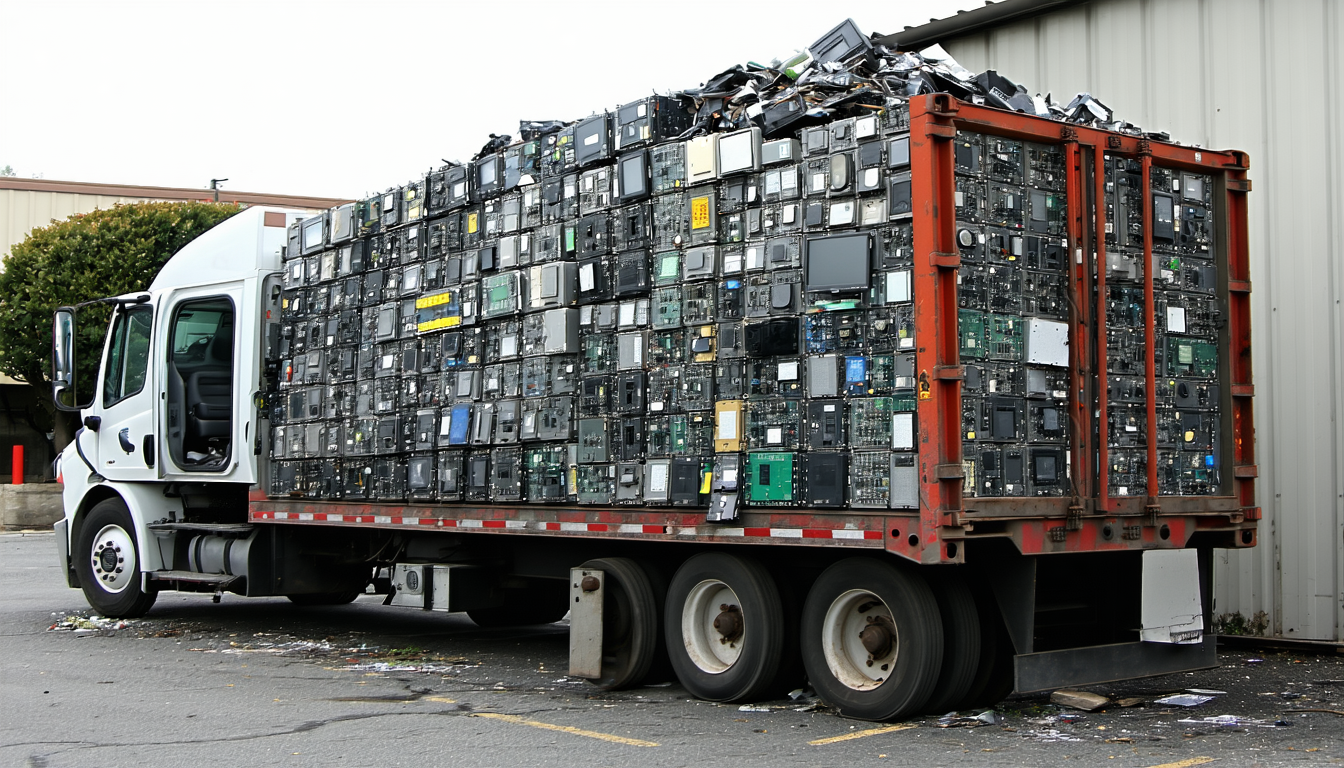Introduction
In the heart of California’s Central Coast, San Luis Obispo is grappling with a growing environmental challenge: electronic waste, or e-waste. As technology advances at a rapid pace, discarded devices like smartphones, laptops, and appliances pile up, posing risks to both the environment and public health. This article delves into the current state of e-waste in San Luis Obispo, exploring local initiatives, community impact, and the urgent need for sustainable solutions. With alarming statistics and expert insights, we uncover how this issue affects residents and what steps are being taken to address it.
The Growing E-Waste Problem in San Luis Obispo
San Luis Obispo County generates thousands of tons of e-waste annually, driven by the region’s tech-savvy population and frequent device upgrades. According to a 2022 report by the California Department of Resources Recycling and Recovery (CalRecycle), over 6 million tons of e-waste are produced statewide each year, with a significant portion originating from smaller communities like San Luis Obispo. Improper disposal of electronics, which often contain hazardous materials like lead and mercury, can contaminate soil and water, threatening local ecosystems.
The challenge lies in limited awareness and access to proper recycling facilities. Many residents unknowingly toss electronics into regular trash bins, exacerbating landfill issues. This trend underscores the need for education and infrastructure to manage e-waste effectively in the area.
Local Initiatives Tackling E-Waste
San Luis Obispo has taken steps to combat this issue through community-driven programs and partnerships. The Integrated Waste Management Authority (IWMA) of San Luis Obispo County offers free e-waste drop-off events and permanent collection sites. In 2023 alone, IWMA reported collecting over 500 tons of electronic waste during these events, preventing harmful materials from entering landfills.
Additionally, local businesses and schools have joined forces to promote responsible disposal. “Education is key to changing behaviors,” says Sarah Johnson, an environmental specialist with IWMA. “We’re working to ensure every resident knows where and how to recycle their old devices safely.”
Impact on Residents and Businesses
The e-waste crisis in San Luis Obispo affects more than just the environment; it has economic and social implications as well. Small businesses often struggle with the costs of proper disposal, while low-income households may lack access to recycling resources. This creates a disparity in how e-waste is managed across different demographics.
Health risks are another concern, as exposure to toxic substances from improperly discarded electronics can lead to respiratory issues and other ailments. Community advocates argue that addressing e-waste is not just an environmental priority but a public health necessity.
Challenges in E-Waste Management
Despite progress, several obstacles remain in managing e-waste effectively in San Luis Obispo. Limited funding for recycling programs restricts their reach, while outdated state policies fail to keep pace with technological advancements. Some critics also point out that not all collected e-waste is processed locally, with much of it shipped overseas under questionable conditions.
On the other hand, supporters of current initiatives believe that incremental improvements are better than none. Balancing cost, logistics, and environmental responsibility remains a complex issue that requires collaboration between government, businesses, and residents.
Future Outlook for E-Waste Solutions
Looking ahead, experts predict that e-waste volumes will continue to rise unless systemic changes are implemented. Innovations like extended producer responsibility (EPR) programs, where manufacturers are held accountable for end-of-life product management, could offer a viable solution. Additionally, increasing consumer awareness through campaigns may encourage more sustainable purchasing habits.
According to Dr. Emily Carter, a sustainability researcher at Cal Poly San Luis Obispo, “The future depends on integrating circular economy principles into our daily lives. We must design products for reuse and make recycling accessible to everyone.” Such insights highlight the potential for long-term change if action is taken now.
Conclusion
The e-waste challenge in San Luis Obispo reflects a broader national struggle to balance technological progress with environmental stewardship. While local efforts like IWMA’s collection events show promise, much work remains to ensure safe disposal and minimize health risks. By fostering collaboration among stakeholders and embracing innovative policies, San Luis Obispo can lead by example in tackling this pressing issue. The time to act is now—before discarded devices become an even greater burden on future generations.
Frequently Asked Questions (FAQ)
- What is e-waste, and why is it a problem in San Luis Obispo?
E-waste refers to discarded electronic devices like phones, computers, and TVs. In San Luis Obispo, improper disposal leads to environmental contamination due to toxic materials, posing risks to soil, water, and public health. - Where can I recycle e-waste in San Luis Obispo?
Residents can use drop-off locations provided by the Integrated Waste Management Authority (IWMA) or participate in scheduled collection events throughout the year. - How can I help reduce e-waste in my community?
Opt for repairing devices instead of replacing them, donate usable electronics, and always recycle through certified facilities rather than throwing them in regular trash. - Are there penalties for improper e-waste disposal?
Yes, California law prohibits disposing of electronics in regular trash, with potential fines for non-compliance under state regulations managed by CalRecycle.

